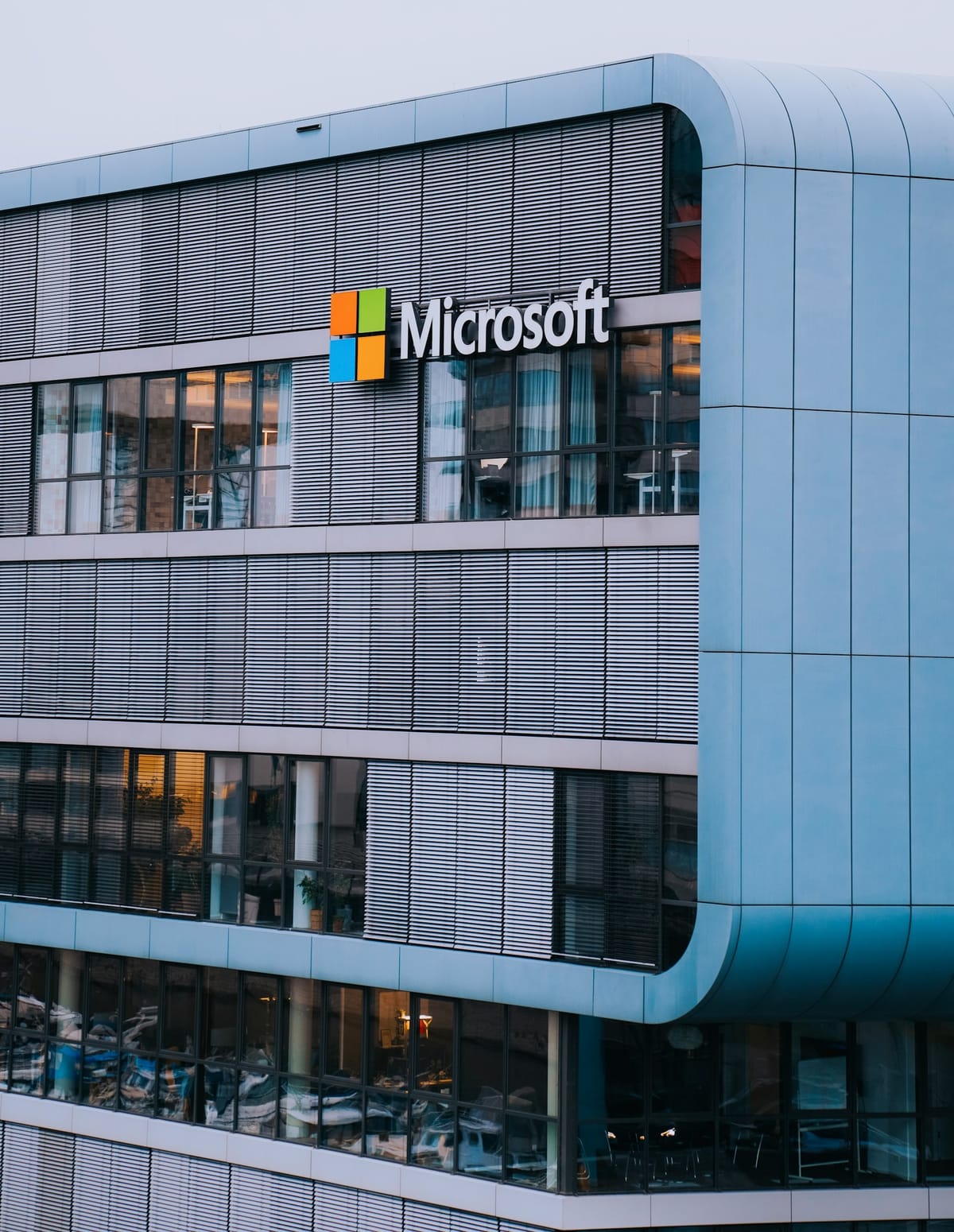Microsoft Azure Launches 150K GPUs, Liquid Cooling Cuts Power, ASICs Drive Exascale AI

TL;DR
- Microsoft Azure AI Superfactory Deploys 150,000+ NVLink GPUs Across 1,100+ Racks
- Azure Energy‑Efficient Data Centers Use Liquid Cooling to Cut Power by 25%
- High‑Performance Compute Clusters Shift to ASIC‑Based AI Accelerators for Exascale Workloads
- Immersion Cooling and Renewable‑Energy Integration Reduce Carbon Footprint of Hall‑Cloned Data Centers
- Hybrid Edge HPC Networks Enable Real‑Time Scientific Simulation at Control Centers
Azure’s AI Superfactory Redefines Cloud‑Scale Computing
Scale and Architecture
- More than 150 000 NVLink‑connected GPUs deployed across over 1 100 two‑story racks.
- Each rack houses 72 GPUs, delivering 800 Gbps Ethernet for GPU‑to‑GPU communication.
- Blackwell accelerators provide 1.8 TB pooled bandwidth and 15 PFLOPS Tensor‑core performance.
- Design supports 140 kW per rack and achieves 99.99 % (four‑nine) uptime.
- Water use reduced to the equivalent of 20 homes per year per rack, underscoring a sustainability focus.
Infrastructure Impact
- SONiC operating system eliminates vendor lock‑in, enabling seamless integration with partner hardware such as OpenAI and xAI.
- MRC protocol delivers low‑latency model serving across heterogeneous accelerators.
- Deployment aligns with a $100 B+ global AI capex surge and a $50 B+ infrastructure commitment from Anthropic, securing component supply.
- Azure’s 150 k‑GPU fleet represents roughly 0.15 % of worldwide AI compute capacity, sufficient to attract high‑value enterprise workloads.
Ecosystem Integration
- Azure AI Foundry, Copilot Studio, Microsoft Fabric, and Databricks now serve as mandatory layers for production pipelines on the superfactory.
- OpenAI’s Blackwell accelerator is the default inference engine; MRC ensures model orchestration across the NVLink mesh.
- The AI Futures Youth Council provides governance for responsible AI, reinforcing compliance with SOC 2, GDPR, and HIPAA.
Emerging Trends
- Enterprise shift toward managed AI services reduces hidden costs of DIY GPU clusters.
- Effective GPU lifespan compressed to 1–3 years, prompting accelerated refresh cycles.
- Power‑density design and water‑use reductions highlight a move toward greener AI compute.
- Network‑centric scaling, anchored by NVLink mesh and 800 Gbps Ethernet, becomes the de‑facto fabric for clusters exceeding 100 k GPUs.
12‑Month Forecast
- GPU inventory projected to reach approximately 200 000 NVLink units as new racks become operational in Europe and the United States.
- GPU‑to‑GPU Ethernet links expected to exceed 1 Tbps to support training of trillion‑parameter models.
- Azure AI Foundry templates for “Foundation‑Model‑as‑a‑Service” slated to generate 30 % of Azure’s AI revenue.
- Predictive‑maintenance driven by AI aims to improve uptime to 99.999 % (five‑nine).
Azure Energy‑Efficient Data Centers Use Liquid Cooling to Cut Power by 25%
Context and Power‑Demand Landscape
- AI workloads projected to create a 45 GW power shortfall in the United States by 2028.
- Data‑center electricity consumption could rise from 4 % to 7‑12 % of national load by 2030.
- Current capacity: 47 GW; order book: 40 GW (Dominion Energy, Virginia).
- Estimated impact: 33 million households at risk if the shortfall materializes.
Azure’s Liquid‑Cooling Architecture
- Two‑story datacenters with NVLink‑dense GPU racks (72 GPUs per rack, 1.8 TB pooled GPU bandwidth).
- Closed‑loop water‑based cooling reduces per‑rack power draw by approximately 25 %.
- Water consumption lowered to an equivalent of 20 residential households per year.
- Operational uptime reported at 99.99 % (4×9 design).
Efficiency Gains and Grid Impact
- Power‑reduction of 25 % per rack translates to an offset of roughly 1 GW for every 4 GW of added Azure AI compute capacity.
- Projected reduction of Azure’s incremental AI workload power: ~15 % in 2026, rising to ~20 % by 2030.
- Target PUE for Azure high‑density sites: 1.1 in 2026, 1.05 by 2030 (current industry average 1.4).
- Forecast share of national electricity use by data centres: 6 % in 2026, 9 % in 2030.
Emerging Industry Trends
- Direct‑liquid‑cooling loops integrated with high‑density GPU clusters become standard for AI‑intensive workloads.
- Hybrid energy supply models, exemplified by the UAE’s Stargate project, combine 1 GW of on‑site generation with 19 GWh of battery storage.
- Regulatory bodies (NERC, IEA) are advancing requirements for real‑time grid telemetry to accommodate rapid load variability.
Stakeholder Implications
- Grid operators: Anticipate a reduced peak‑load impact from Azure expansions, enabling deferment of new transmission assets in regions such as Texas and Virginia.
- Cloud providers: Deployment of liquid‑cooling infrastructure yields electricity cost avoidance estimated at US$150 M per year for a 5 GW AI compute rollout.
- Policy makers: Adoption of efficiency standards—e.g., mandatory PUE < 1.2 for AI‑dense sites—could accelerate technology diffusion and align with national carbon‑budget goals.
Projection Summary
- The Azure liquid‑cooling deployment directly addresses the power‑capacity constraints identified in late‑2025 analyses.
- Scaling the technology is projected to curb the growth rate of data‑center electricity consumption, keeping the sector’s share of national load below a 10 % threshold by 2030, provided parallel investments in grid resilience and supportive regulatory frameworks are realized.
ASIC Accelerators Redefine Exascale AI Computing
Accelerating the Move From GPUs to ASIC‑Centric Pods
- Google’s Ironwood TPU pod (9,216 chips) delivers 1.2 TB/s (≈9.6 Tbps) inter‑chip bandwidth, surpassing the 800 Gbps bandwidth of Microsoft’s Azure GPU rack.
- NVIDIA’s Blackwell Ultra remains GPU‑focused, adding NVFP4 tensor cores, while ASIC designs dominate bandwidth‑bound large‑language‑model (LLM) training.
Hybrid Memory‑Compute Fabrics Reduce the Memory Wall
- PICNIC photonic‑interconnects achieve a 3.95× speedup over Nvidia A100 and cut power consumption by 80 %.
- d‑Matrix’s Corsair accelerator integrates 1 GB SRAM per chip, delivering 9,600 trillion operations per second—over three times the throughput of Blackwell GPUs.
- SquareRack architecture claims a 10× HBM‑equivalent performance boost for inference workloads.
Modular Chiplet Architecture and Power Management
- 3‑D‑stacked chiplets enable linear scaling while maintaining thermal limits; the CCPG (Chiplet‑Level Clock & Power Gating) scheme reduces power use by 80 % per chiplet without sacrificing throughput.
- Network fabrics such as Jupiter (13 Pb/s bisectional bandwidth) and NVIDIA Quantum‑X800 InfiniBand double inter‑rack bandwidth, supporting >100 Tbps total fabric capacity.
Cloud‑Scale Deployments and Market Momentum
- Microsoft’s Azure AI Superfactory provisions 140 kW racks with 72 NVLink‑connected GPUs each, delivering 800 Gbps GPU‑to‑GPU Ethernet.
- Google, AMD (Helios systems), and d‑Matrix have secured multi‑hundred‑million‑dollar funding rounds, reinforcing ASIC roadmaps and targeting a $100 B+ AI data‑center chip market by 2030.
Data‑Driven Performance Metrics
- Inter‑pod bandwidth: 1.2 TB/s (TPU Ironwood) vs. 800 Gbps (Azure GPU rack).
- Energy efficiency: Photonic interconnects offer up to 30× lower energy per FLOP compared with Nvidia A100.
- Compute density: Corsair chips achieve 9,600 trillion ops/s versus ~2,500 trillion ops/s for Blackwell GPUs.
- Market growth: A 35 % compound annual growth rate is projected for AI compute hardware through 2030.
Projected Landscape 2026‑2028
- ASIC‑centric exascale clusters are expected to account for over 60 % of global AI training capacity by 2027.
- Photonic interconnect layers are projected to become a tier‑1 fabric for at least two major cloud providers, reducing inter‑rack latency below 50 ns.
- Hybrid chiplet‑ASIC nodes will dominate inference serving, delivering tenfold HBM‑equivalent throughput with sub‑millisecond latency.
- GPUs will retain niche roles in flexible, low‑latency workloads such as diffusion models, while ASICs handle deterministic LLM training and large‑scale inference.
Immersion‑Cooled, Renewable‑Powered Hall‑Cloned Pods Cut Data‑Center Carbon
Energy Landscape
- AI spend projected at US $144 bn by 2030; AI workloads will consume ~30 % of data‑center power by 2026 (IDC, 2025).
- Data‑center electricity use expected to double by 2030, raising sector share from 4 % to 7‑12 % of national demand (Koomey, 2025).
- The U.S. faces a 45‑GW shortfall by 2028—enough to power 33 M homes (IEA, 2025).
- Investment in fresh capacity hits US $400 bn in 2025, with an additional US $80 bn earmarked for energy‑intensive builds (Oct 2025 announcements).
Immersion Cooling Gains
- PUE of 0.9‑0.95 for immersion‑cooled pods versus 1.2‑1.4 for conventional air‑cooled halls.
- Microsoft’s “AI Superfactory” reports saving the water usage of 20 homes per MW of immersion‑cooled rack.
- Retrofit CAPEX adds roughly 12 % to total build cost, offset by 30‑40 % OPEX energy savings.
- Survey data show 28 % of new modular (hall‑cloned) deployments used immersion cooling in 2024‑25; Gartner projects >45 % by 2028.
Renewable Integration
- Dominion Energy (Virginia) expanded to 47 GW, designating ~50 % of new hall‑cloned sites for on‑site solar or wind contracts (2025).
- Stargate UAE pairs 3.7 GW solar PV with 19 GWh battery storage to serve a 1 GW AI load (2025).
- South Wales (UK) plans an 80‑MW renewable feed for a data‑center cluster, backed by biomass and batteries (Drax, 2025).
- California’s Rondo Heat Battery delivers 100 MWh of solar‑charged thermal storage at 97 % efficiency over 100 days.
Synergy and Impact
- Standardized thermal envelopes in hall‑cloned pods allow factory‑pre‑filled immersion loops, guaranteeing consistent <0.95 PUE performance.
- Coupling a pod with a renewable PPA drops carbon intensity from ~450 kg CO₂/MWh (grid average) to 150‑200 kg CO₂/MWh—a 55‑60 % reduction.
- Case study: Microsoft South Wales – 80 MW immersion‑cooled pod powered by solar‑biomass mix, delivering a 30 % annual carbon cut versus an air‑cooled counterpart.
- Case study: Stargate UAE – distributed immersion pods linked to a 1 GW renewable hub, achieving grid‑stable operation through real‑time load shifting.
Emerging Trends
- Immersion‑cooling penetration: 28 % (2025) → >45 % (2028).
- Renewable share per pod: 35‑40 % (2025) → ≥55 % (average 2028).
- Carbon intensity per compute unit: 400 kg CO₂/MWh (2025) → ≤180 kg CO₂/MWh (2028).
- Regional peak‑demand impact: 2‑3 % per large pod (2025) → <1 % with battery‑assisted load leveling (2028).
Actionable Steps
- Standardize factory‑built immersion‑cooling kits to lock PUE ≤0.95 and shrink deployment lead‑time.
- Secure ≥5‑year renewable PPAs early to hedge against the projected 45‑GW shortfall.
- Integrate battery storage (≥0.5 MWh per MW) for solar intermittency and ancillary grid services.
- Deploy real‑time energy‑management APIs (e.g., NERC GridMetrix®) to enable dynamic workload shifting across pod clusters.



Comments ()